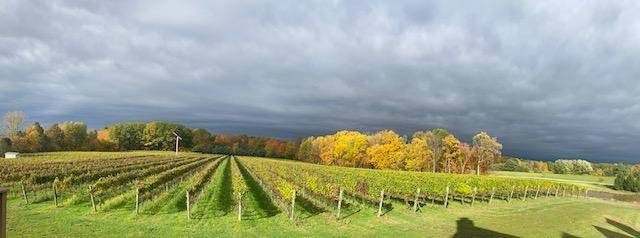Have a wine tasting in your future and want to come prepared? Know what you like but not how to describe it? You’re in the right place. We’ve broken down some basic wine lingo to help take your next tasting to the next level. Welcome to Wine 101. Ready? Let’s go.
On the nose. When to say aroma or bouquet.
Before tasting wine, we usually smell it. What we call that smell depends on the age of the wine. A young wine has an “aroma,” comprised mainly of the fruit it was made from and the oak it was aged in. A mature wine boasts a “bouquet,” which has more complex notes developed over a longer aging period.
Acidity. The power of sour.
Acidity is a fundamental trait in wine and one of the basic flavors our tongues can taste. Acidity gives wine its tartness. Think of squeezing a lemon into your mouth—this is an example of extremely high acidity. Acid is a larger taste component in white wine. You might call a higher acid wine crisp or refreshing, while a lower acid variety may be creamier.
Sweetness. Dry, sweet, or in-between.
Sweetness is another core element of taste. A wine is considered dry when all of the sugar in the grapes is converted to alcohol during the fermentation process. A sweet wine contains residual sugar. Off-dry, or semi-dry, wine has a small amount of residual sugar. Detecting sweetness can sometimes be tricky, because fruitiness or certain characteristics of oak can give sweet qualities to a technically dry wine. As with all of these elements, it’s about balance.
Body. What’s up with wine weight?
It’s acceptable (and appropriate) to discuss weight when we’re talking about wine. It refers to how heavy or light wine feels in your mouth. Think about the difference between orange-infused water and orange juice. White wine is usually lighter bodied, while red is fuller. But there are some outliers. Pinot Noir can be light bodied. Chardonnay is often full.
Tannins. What are they, and why should we care?
Tannins come from the skins, seeds, and stems of grapes; which is why red wine generally has more of them. They’re also impacted by the oak that wine is aged in. Tannins add bitterness, astringency, and complexity. When a wine is high in tannins, it’s called tannic. A tannic wine will create a drying sensation in your mouth. Tannins are antioxidants, which help wine age gracefully… and are a great argument in the case of wine being good for our health.
Fruit intensity. How much flavor is there to savor?
From subtle to bold, wine has a large range of fruit intensity. A fruity wine might strongly suggest notes of citrus, berries, or pineapple. Less fruit intense wine will be milder. A wine’s fruit intensity can be detected in two ways. First, on the nose. Second, on the palate. Fruitiness depends on climate, grape variety, and decisions made by the winemaker. Fruity does not necessarily mean sweet. Fruity wines impart the aroma and flavor of fruit, while sweetness, remember, refers to residual sugar.
Oak. What’s wood got to do with this?
Wine can become oaky from the barrel it’s aged in, or from free-floating chips or sticks added to its stainless steel fermentation vessel. Oak has a significant impact on color, flavor, tannins, and texture. For example, white wines fermented in oak tend to be paler and silkier. Oak can add flavors of spices, grilled nuts, vanilla, caramel, and more. Unoaked wines—which don’t come in contact with oak—tend to more fruit-forward, fresh and floral.
There you have it, our Wine 101. Now that you know the basics, be sure to stop in and wow us with your wine description prowess.




